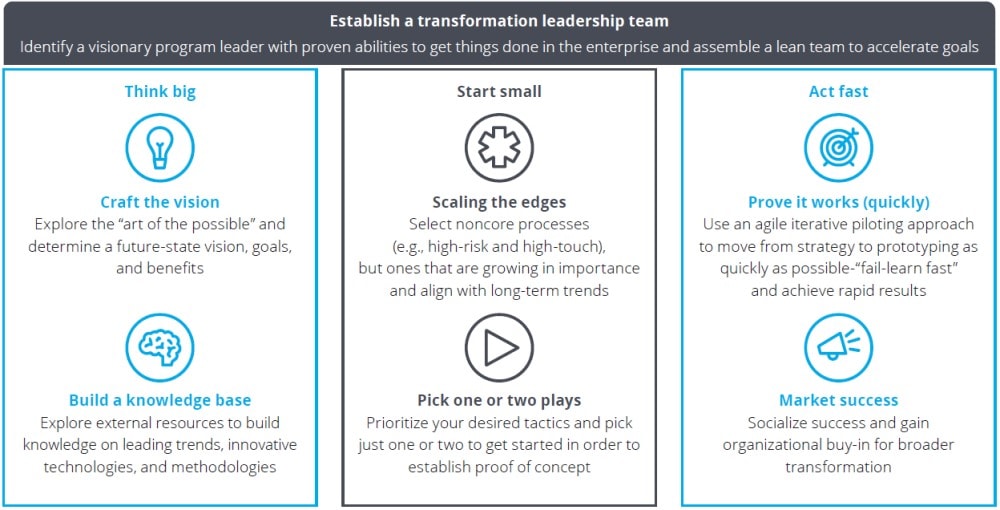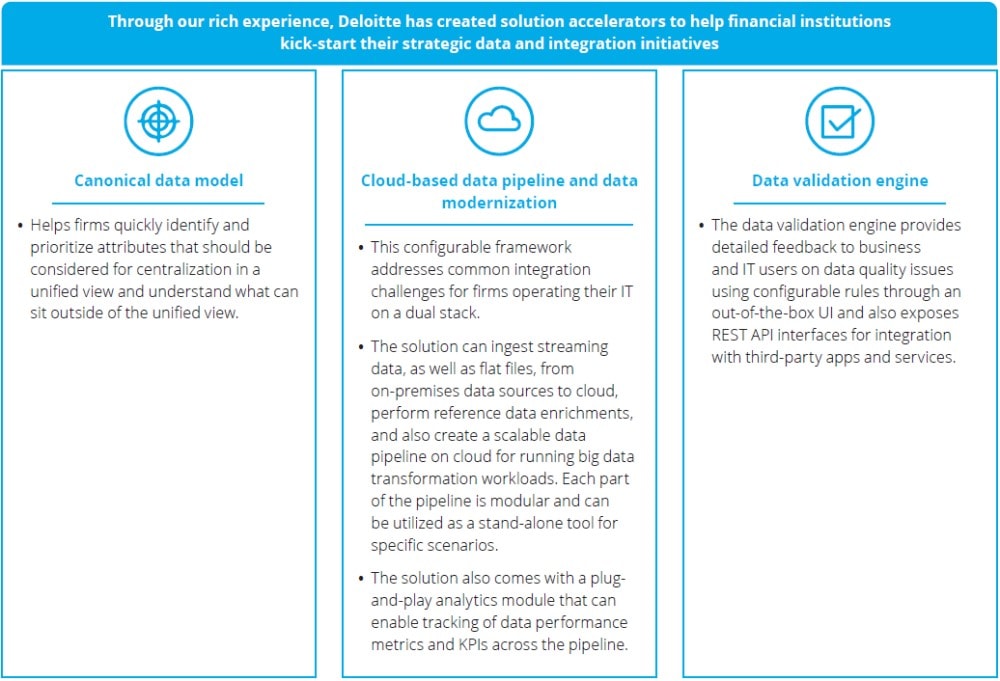Tackling data fragmentation to modernize legacy technology has been saved

Perspectives
Tackling data fragmentation to modernize legacy technology
Legacy platforms hold important data. But fragmentation often requires companies to direct large portions of their budgets to solving data challenges, rather than focusing on business needs. Explore five areas where big data in asset management can help you get started on transformational initiatives, while staying within a realistic IT budget.
Solving modernization with well-framed data strategy
Financial services firms often struggle with modernizing their legacy technology platforms, which hold most (if not all) of the critical data for these institutions. Given that these platforms have been built over the years, the data is fragmented across the enterprise, with no coherent strategy around curation, translation, integration, storage, quality governance, or compliance. Therefore, these institutions spend most of their transformation budget on solving data challenges and focusing very little on real business needs.
To keep up with evolving business challenges, banks typically focus their technology transformation efforts across five key problem areas or modernization barriers:
Complex scale of operations |
|
Technology issues |
|
Organizational siloes |
|
Talent gaps |
|
Highly depriciated infrastructure landscape |
It should be noted, however, that the explosion of data in the digital age has compounded the complexity of technology transformation across each of these areas.
Broker-dealers and asset management firms continue to automate and digitize increasingly larger parts of their businesses, creating more dependencies on big data and amplifying their existing data challenges. These are expensive and frustrating problems for senior executives, making them wonder, “What if...”
Legacy platforms could seamlessly support new business needs without costly transformations? |
|
Processes could scale more efficiently by eliminating manual interventions and workarounds? |
|
Legacy data could enable customer analytics and AI to help run and grow the business faster? |
|
Improvements in data quality could reduce operational overhead & make processes more efficient? |
|
Your firm could achieve predictive digital controls and regulatory compliance using data? |
To achieve all of this and tackle the modernization barriers mentioned above, global firms need to formulate a well-framed data strategy—making big data a part of their asset management strategy. How firms choose to deal with these challenges can say a lot about their strategy and continued viability in a market that’s facing increasing disruption.
Designing a strategic road map to tackle data fragmentation
Since the transformation budgets of firms are limited, it’s important to design a strategic road map of initiatives for including data science in portfolio management and to prioritize selected initiatives that can deliver the most value.
One rule of thumb that can validate the strategic road map is Pareto’s principle (commonly known as the 80-20 rule). Firms may often discover that only about 20% of all existing data fragmentation issues need a “transformational” approach. This can help firms design a practical road map that can be achieved with a realistic budget.
To get started including data science in your portfolio management, a stable leadership team should be in place to champion the cause and provide guidance throughout the journey.
Here’s an illustrative framework for how firms can approach this:

How can we help?
Kick-start your data science portfolio management initiatives

In our new paper, we examine the modernization barriers in detail and discuss pragmatic data initiatives to help address each of them. We also present two successful case studies involving large-scale legacy modernization at broker-dealers and asset management firms and illustrate how big data challenges were successfully addressed in each of these transformations.
Recommendations
Creating effective customer experience strategies
A new era of customer engagement
Digital transformation hits core banking
The future of digital banking strategy


